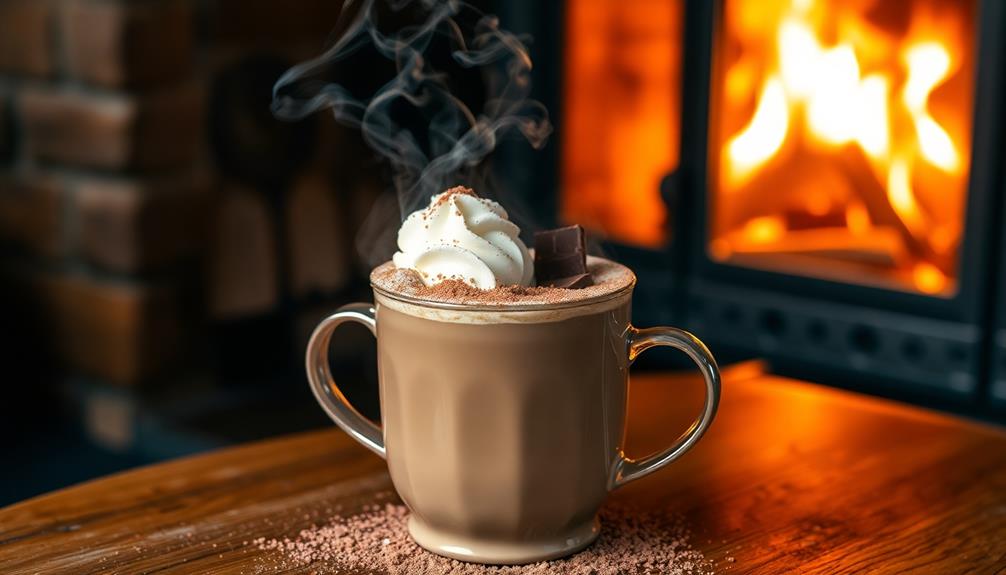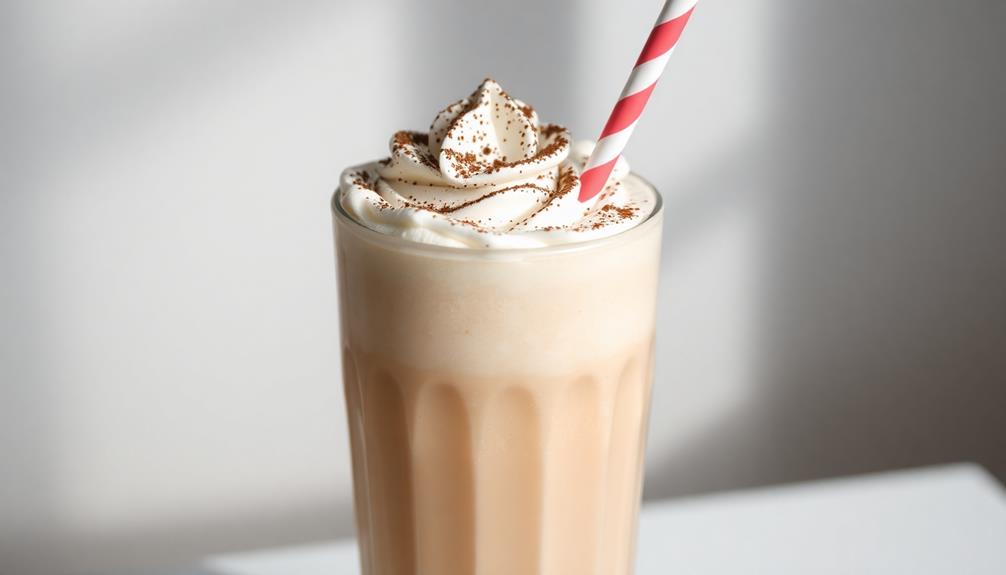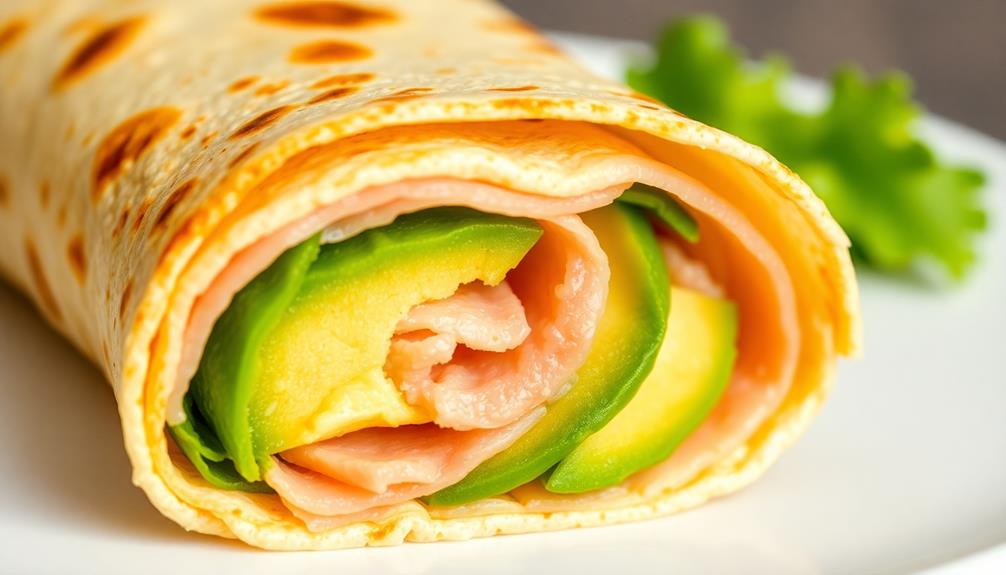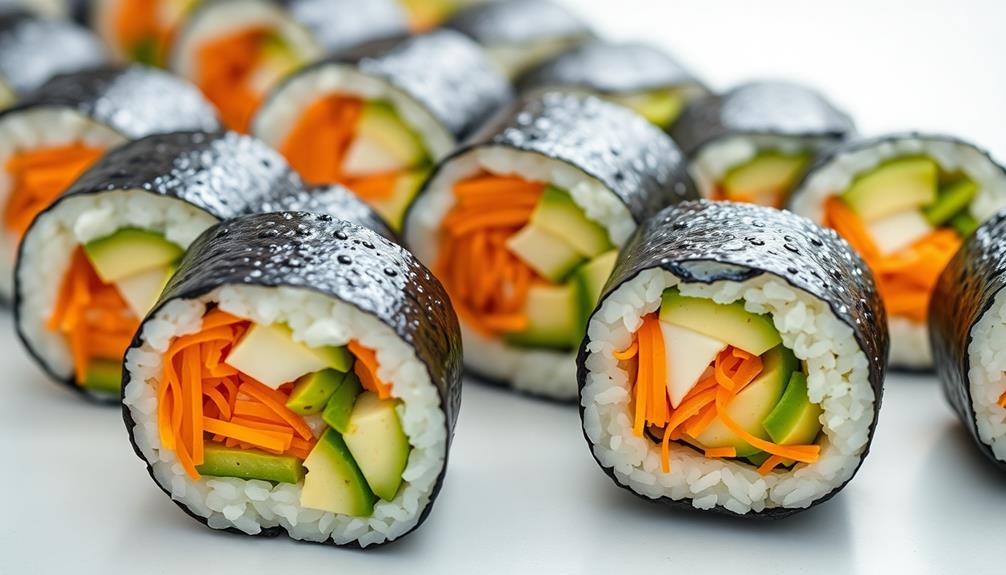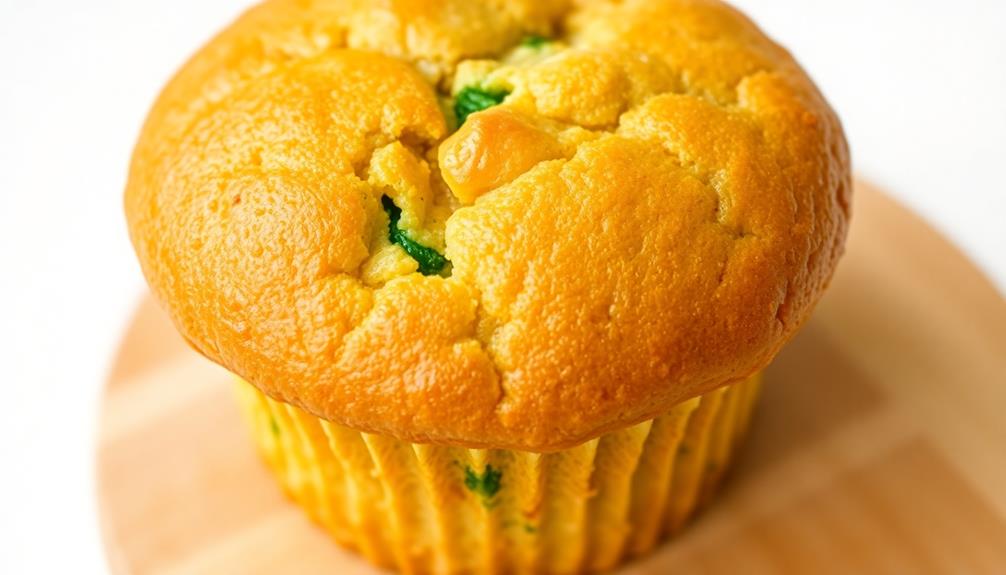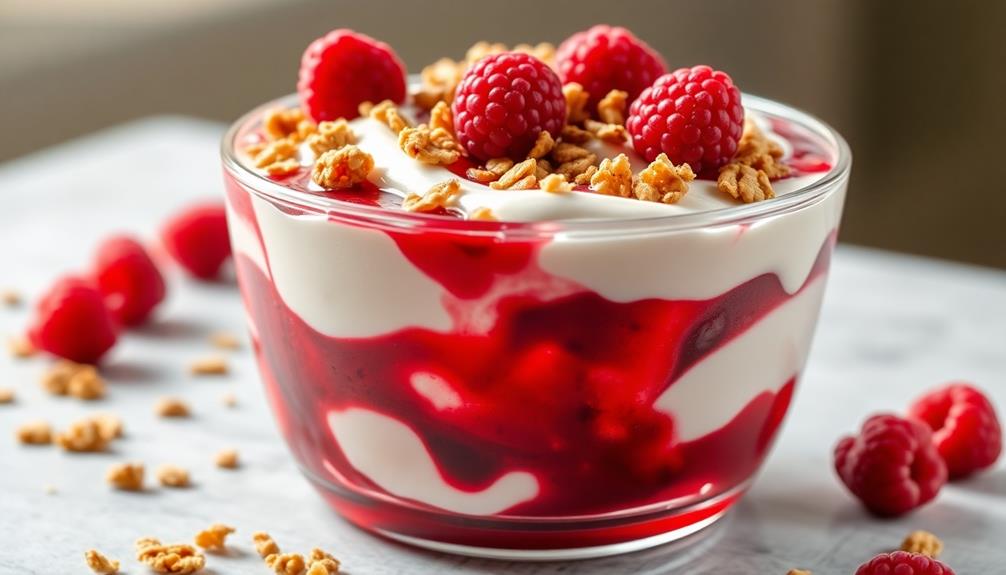Ah, hot chocolate – the quintessential winter warmer that's been delighting taste buds for centuries! Originating from ancient Mesoamerican civilizations, this rich, creamy delight made its way to Europe, where it was embraced by the aristocracy. Today, you can whip up a batch using milk, quality dark chocolate, cocoa powder, sugar, and a hint of vanilla. Simply whisk the ingredients together on the stovetop until smooth and steaming, then top it off with a dollop of whipped cream or a sprinkle of cinnamon. Hot chocolate isn't just a drink, it's an experience that evokes feelings of comfort and nostalgia. And there's so much more to discover about this beloved beverage. If you’re feeling particularly indulgent, you can turn your hot chocolate into a rich and creamy chocolate mousse by chilling it in the refrigerator until it thickens, then spooning it into elegant serving glasses. If you’re feeling even more adventurous, you can experiment with adding a splash of flavored liqueur such as peppermint or hazelnut for an extra decadent treat. No matter how you choose to enjoy it, hot chocolate is a true classic that will continue to warm hearts for generations to come.
Key Takeaways
- Hot chocolate originated in ancient Mesoamerican civilizations, where cacao was used in sacred rituals and later introduced to Europe by Spanish conquistadors.
- The classic hot chocolate recipe includes whole milk, high-quality dark chocolate, unsweetened cocoa powder, sugar, vanilla, and a pinch of salt.
- Hot chocolate can be prepared on the stovetop, in the microwave, or in a slow cooker, and is often topped with whipped cream, marshmallows, or other garnishes.
- Consuming hot chocolate is associated with comfort, nostalgia, and social bonding, and it is frequently enjoyed during cold weather and holiday celebrations.
- Hot chocolate provides antioxidants from cocoa, may improve mood, and can be made with healthier alternatives like dark chocolate.
History
Tracing the origins of hot chocolate, the beverage's history can be traced back to the ancient Mesoamerican civilizations of the Maya and Aztec.
These ancient peoples were the first to discover the joys of cacao, grinding the beans into a rich, frothy drink. They believed cacao had divine properties and often used it in sacred rituals.
Over time, the Spanish conquistadors discovered hot chocolate and brought the recipe back to Europe.
There, it became a favorite of the aristocracy, who'd add sugar, vanilla, and other spices to the mix. Soon, hot chocolate houses sprung up all over Europe, becoming gathering places for the upper class.
Today, hot chocolate remains a beloved treat, enjoyed by people of all ages around the world.
Whether sipped on a cozy winter day or savored as a sweet indulgence, the history of this delicious drink is one of global discovery and cultural exchange.
Recipe
Hot Chocolate
Recipe
There's something uniquely comforting about a steaming mug of homemade hot chocolate on a chilly day. The rich, velvety texture and the depth of flavor make it a true delight for the senses. Whether you're curled up by the fireplace or sharing it with friends, this recipe will deliver a cozy and indulgent experience.
The secret to an exceptional hot chocolate lies in the quality of the ingredients and the method of preparation. By using high-quality chocolate and a few simple techniques, you can elevate this classic beverage to new heights.
- 2 cups (480 ml) whole milk
- 2 ounces (60 g) high-quality dark chocolate, chopped
- 2 tablespoons (30 ml) unsweetened cocoa powder
- 2 tablespoons (30 ml) granulated sugar
- 1/4 teaspoon (1.25 ml) vanilla extract
- Pinch of salt
In a medium saucepan, whisk together the milk, chopped chocolate, cocoa powder, sugar, vanilla, and salt over medium heat. Stir frequently until the chocolate is melted and the mixture is smooth and hot, about 5-7 minutes.
Be careful not to let the milk boil. Once the hot chocolate is heated through, pour it into mugs and serve immediately.
For an extra creamy and indulgent experience, top the hot chocolate with a dollop of whipped cream or marshmallows. You can also experiment with different flavor additions, such as a touch of cinnamon, a splash of peppermint extract, or a sprinkle of cayenne pepper for a touch of heat.
Cooking Steps
First, you'll need to combine the milk and cocoa powder in a saucepan, then whisk in the sugar.
Next, heat the mixture until it's nice and warm.
Finally, grate some delicious chocolate right into the pot and give it a good stir.
Serve it up with a dollop of fluffy whipped cream – yum!
Step 1. Combine Milk and Cocoa Powder

Once you've gathered your milk and cocoa powder, it's time to combine them. Start by pouring the milk into a saucepan. You'll want to use about 1 cup of milk per serving of hot chocolate you plan to make.
Next, add the cocoa powder. The amount of cocoa powder you use will depend on how strong you want your hot chocolate to be. As a general rule, use about 1-2 tablespoons of cocoa powder per cup of milk. Whisk the milk and cocoa powder together until they're fully combined and there are no lumps.
Now, place the saucepan on the stove over medium heat. Warm the mixture, stirring frequently, until it's hot and steaming. Be careful not to let it boil, as that can make the cocoa taste bitter.
Once it's nice and hot, your hot chocolate is ready to serve and enjoy! You can add any extra toppings you like, such as whipped cream or marshmallows.
Step 2. Whisk in the Sugar
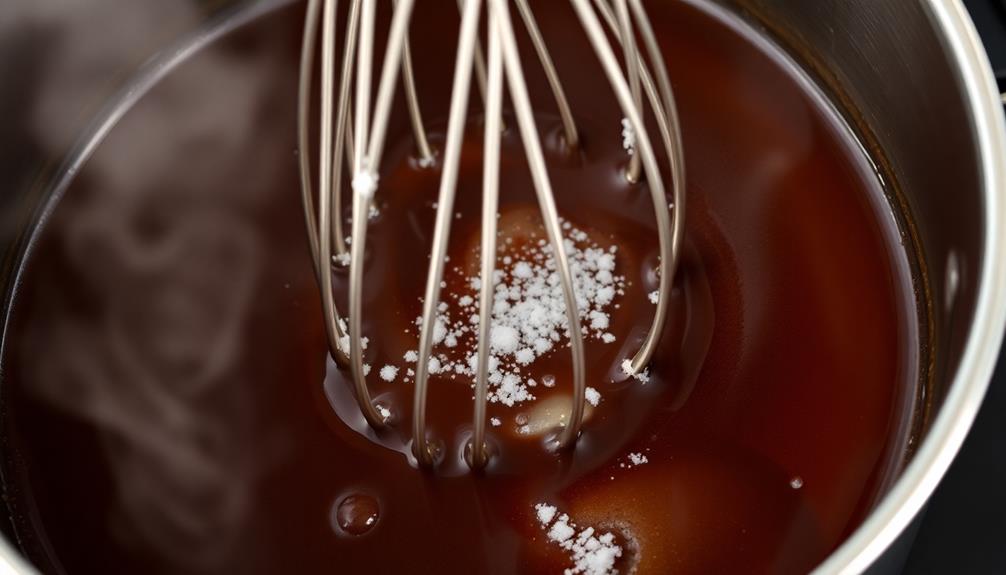
Next, whisk in the sugar. This crucial step adds sweetness and depth to your hot chocolate. Don't be afraid to really get in there with your whisk, mixing vigorously to fully incorporate the sugar.
You want to make sure there are no stubborn lumps left behind. The sugar will dissolve quickly, creating a smooth, rich base for your drink.
As you whisk, you'll notice the mixture start to thicken and become more glossy. This is exactly what you're aiming for – the sugar is doing its job, blending seamlessly with the cocoa powder and milk.
Keep whisking until the sugar has fully dissolved and the texture is velvety and inviting.
Once the sugar is fully incorporated, you're ready for the next step. Taste the hot chocolate and adjust the sweetness to your liking, adding more sugar if needed.
The perfect balance of sweet and chocolatey goodness is just moments away.
Step 3. Heat the Mixture
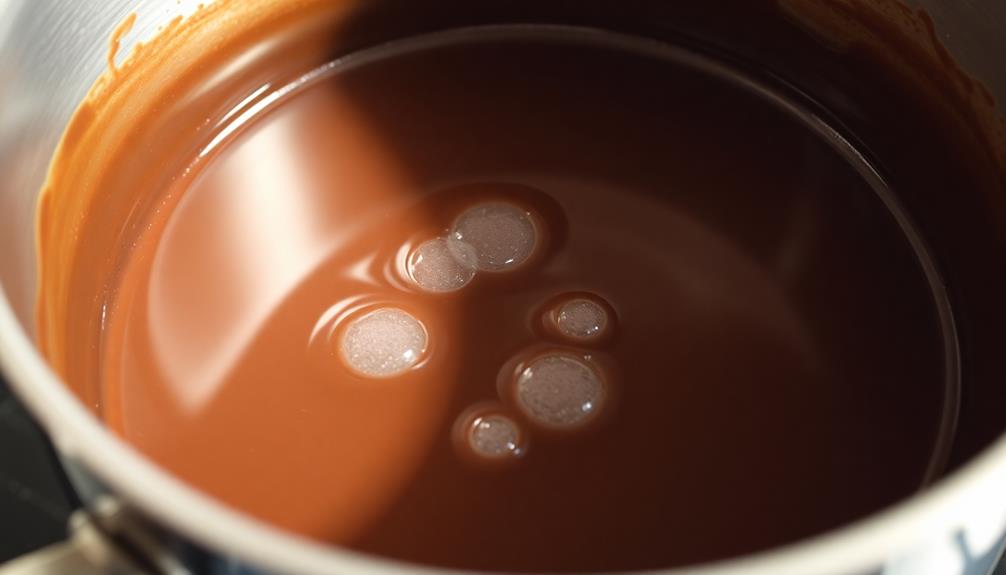
With the sugar fully incorporated, it's time to heat the mixture. Grab that pot and place it on your stovetop over medium heat. Slowly pour in the milk, stirring gently as you go. You want to make sure the milk heats up evenly without scorching.
As the milk starts to steam and tiny bubbles form around the edges, reduce the heat to low. Now, it's time to add the chocolate. Sprinkle in the cocoa powder, a little at a time, whisking constantly to prevent lumps. The chocolate will melt into the warm milk, creating a rich, velvety texture.
Keep a close eye on the mixture, stirring occasionally, until it reaches your desired temperature. You're looking for it to be hot, but not boiling.
Once it's perfect, remove the pot from the heat. Your homemade hot chocolate is ready to enjoy! Ladle the steaming goodness into mugs and get cozy.
Step 4. Grate Chocolate Into Mixture
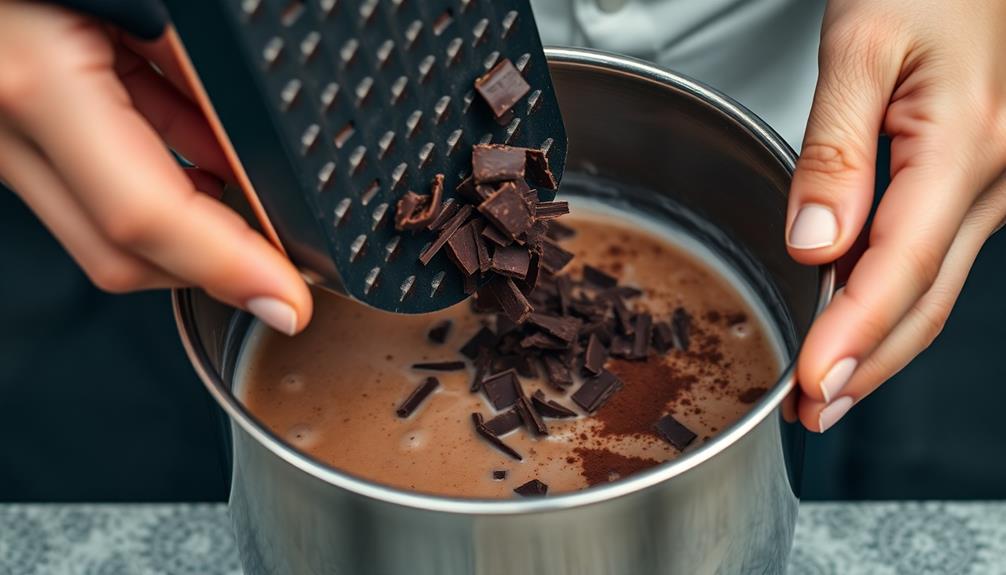
Grate the chocolate into the simmering milk mixture using a fine-toothed grater. Work quickly, grating the chocolate in small batches to ensure it melts evenly. As the chocolate shreds fall into the pot, stir the mixture gently. This helps the chocolate incorporate smoothly, creating a rich, velvety texture.
Adjust the heat to low, continuing to stir until the chocolate has fully dissolved. You'll know it's ready when the mixture becomes silky smooth, with no visible chocolate pieces remaining. If the mixture seems too thin, grate in a bit more chocolate. On the other hand, if it starts to thicken too much, simply add a splash of milk to thin it out.
Once the desired consistency is achieved, your hot chocolate is ready to serve. Ladle the steaming beverage into mugs and top with a dollop of whipped cream, a sprinkle of cinnamon, or shaved chocolate, if desired.
Sip and savor the decadent, homemade treat.
Step 5. Serve With Whipped Cream

If desired, top the homemade hot chocolate with a dollop of freshly whipped cream. This simple addition can elevate the rich, chocolatey drink to a whole new level of deliciousness. The creamy, airy topping perfectly complements the velvety smooth chocolate.
To make the whipped cream, pour some heavy cream into a chilled bowl. Use a hand mixer or stand mixer to whip the cream until it forms stiff peaks. Be careful not to overbeat, or the cream will become clumpy.
Once the whipped cream is ready, scoop a generous amount onto each mug of hot chocolate. The contrast between the warm, indulgent chocolate and the cool, fluffy cream is truly divine.
For an extra touch of luxury, consider lightly dusting the whipped cream with a sprinkle of cocoa powder or shaved chocolate. This not only enhances the visual appeal but also adds an additional layer of chocolatey goodness.
Enjoy this cozy and comforting treat on a chilly day.
Final Thoughts
Ultimately, hot chocolate remains a beloved beverage that can be enjoyed year-round.
Whether you prefer it classic or with a twist, this warm, comforting drink is sure to delight. The versatility of hot chocolate is what makes it so special – you can customize it to your exact taste, adding everything from marshmallows to spices to create your perfect cup.
Beyond its delicious flavor, hot chocolate also holds a special place in our hearts. It's a cozy companion on a chilly day, a sweet treat to share with loved ones, and a nostalgic reminder of childhood.
As you sip your hot chocolate, allow yourself to be transported to a simpler time, where the world slows down, and the simple pleasures in life take center stage.
Frequently Asked Questions
Is Hot Chocolate the Same as Hot Cocoa?
While hot chocolate and hot cocoa are often used interchangeably, they're not quite the same. Hot chocolate is made from melted chocolate, while hot cocoa is made from cocoa powder, milk, and often sugar. The taste and texture can differ as a result.
Can I Make Hot Chocolate With Milk Instead of Water?
Yes, you can definitely make hot chocolate with milk instead of water. The milk will make the drink creamier and richer, giving it a more indulgent flavor. Feel free to experiment to find your perfect hot chocolate recipe.
How Long Does Homemade Hot Chocolate Last?
Homemade hot chocolate can last for up to 4-5 days when stored in an airtight container in the refrigerator. Be sure to consume it before it starts to separate or develop an off-flavor.
What's the Difference Between Dutch-Processed and Natural Cocoa Powder?
The difference between Dutch-processed and natural cocoa powder lies in their acidity levels. Dutch-processed is neutralized, giving it a milder flavor, while natural cocoa has a more acidic taste. The choice depends on your personal preference and the recipe you're using.
Can I Add Marshmallows or Whipped Cream to My Hot Chocolate?
Absolutely! You can add marshmallows or whipped cream to your hot chocolate for a delightful, creamy, and indulgent treat. These toppings will enhance the richness and sweetness of your cozy beverage.
Conclusion
Ah, hot chocolate – a delightful treat that warms the soul! You've mastered the art of crafting this cozy beverage. Whether you're curling up by the fireplace or sipping it on a chilly day, this rich, creamy delight is sure to put a smile on your face. Indulge in its chocolatey goodness and let the flavors dance on your tongue. Savor every sip and create cherished memories with every warm mug. Enjoy this classic comfort in all its glory!
